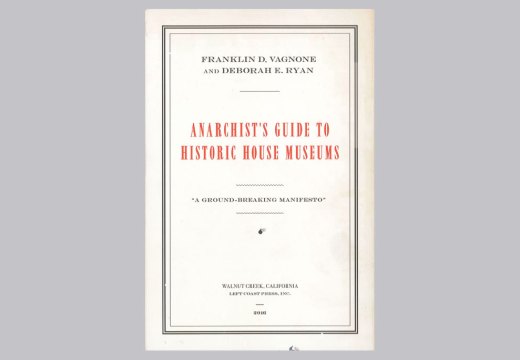In a contemporary art world that often feels like one giant exitless fair, Art Basel (16–19 June) retains a special place. Distinguished by its longevity and serious-minded clientele, the fair is favoured by many galleries and continues to attract contemporary art’s aristocracy. This year sees the 47th edition, with 286 galleries from cities as far-flung as Havana, Seoul, and Carthage setting up camp alongside the best in Europe and North America.
One of a handful of newcomers to the coveted main Galleries section is Galerie Barbara Wien, a gallery-bookshop that has been a fixture on the Berlin scene since 1988. Their six-artist display includes Sonic Sphere – Diagonally-ornamented Copper (2015) by South Korean sculptor Haegue Yang: a metre-high orb covered with copper-plated bells, which hang like pearly tassels atop a wheelable frame. In this context, Yang’s work may seem to literalise the cliché that contemporary art is a costly bauble (although at €50,000 it is not quite in the Koonsian bracket). But it is also a participatory artwork in jewelled clothing; anyone who dares to give it a push will activate a mass of jingles.

Sonic Sphere – Diagonally-ornamented Copper (2015), Haegue Yang. Photo: Akiyasu Shimizu; Courtesy Galerie Barbara Wein, Berlin
Another gallery debuting in the main section is Karma International, headquartered in Zurich and Beverly Hills. Their presentation of female artists is anchored by Judith Bernstein’s drawing Horizontal (1973), in which the head of a penis corkscrews across the page in scrawled charcoal (who said art fairs prefer ‘safer’ pieces?). A larger version of this work was censored from a 1974 show of women’s art in Philadelphia, accused of ‘lacking redeeming social value’. This marked the beginning of Bernstein’s exile from the artistic mainstream, into which she has only been reclaimed in recent years. The drawing’s insistent horizontality is counterbalanced by a sculpture by Ida Ekblad, And after that she ZZzleeepy (2016), in which a pile of stools is crowned by a towering antenna of wire mesh.

And after that she ZZzleepy (2016), Ida Ekblad. Courtesy Karma International
Phallic variations are also the subject of Bruce Nauman’s 1985 drawing Marching Figure, on the stand of New York’s Sperone Westwater. This study in pencil and watercolour for one of Nauman’s neon sculptures of ‘Marching Men’, shows silhouetted figures in lockstep flash an erection with each thrust of their legs. The pictographic man is outlined in muted reds and blues, and a fainter doppelganger lurks beneath him like a retinal after-trace. His mechanical member appears in two overlapping states, as if in travesty of a biological diagram. ‘His drawings are as evocative as his neons,’ says assistant director Andrew Lee. ‘Much of his output is video-based – especially so in recent years – and so what limited objects there are on the market (works on paper, sculpture, neon) tend to be sought after.’

Marching Figure (1985), Bruce Nauman. © Bruce Nauman/DACS, Courtesy Sperone Westwater, New York
London dealer Victoria Miro curates a ‘room within a booth’ in which works by Chantal Joffe, Alice Neel, Yayoi Kusama, and Celia Paul comprise a miniature survey of contemporary portraiture. Joffe’s painting Bella in a Vest (2016) crunches together the genres of childhood portrait and family snapshot, in a strange mix of the calculated and the banal.
The fair’s smaller Statements section showcases the work of emerging artists across 18 galleries, including London’s Laura Bartlett (where Venezuelan artist Sol Calero is showing a replica of a South American bureau de change), and Berlin’s Arratia Beer, who presents the video This Is Offal (2015) by American artist Mary Reid Kelley. Shot at Tate Modern last year in collaboration with her husband, the video imagines a darkly comic scenario in which the different organs of a corpse (voiced by Kelley) protest about their host-body’s suicide. ‘I think even a subject as serious as suicide should be treated by art,’ Kelley tells me. ‘But sometimes at a fair it is a challenge to ask people to take the time to watch a 12-minute film. We want to make something deserving of people’s time.’

Bella in a Vest (2016), Chantal Joffe. Courtesy Victoria Miro
A different mode of contemporary surrealism is on offer at the stand of LA mega-dealer Blum & Poe, in the form of Jim Shaw’s Apophenia (A Tall Drink of Water) (2016). This graphite drawing by the cult LA artist is a finely-shaded layering of faces, fingers, buttocks and less definable body parts – a mash-up of Norman Rockwell and Hans Bellmer.
Apophenia, the process of seeing meaningful patterns in accumulations of random data, might be taken as a metaphor for the experience of an art fair: sensory overload can set in quickly. This year’s Unlimited section, curated for the fifth year by Gianni Jetzer of the Hirshhorn Museum and Sculpture Garden, features a record 88 installations that swell beyond the confines of a typical gallery booth. Six Columns (2006) by John McCracken is a grid of gleaming black pillars based on a drawing from the 1970s; while Untitled (yellow) (1966), by his contemporary Robert Grosvenor, suspends a similar minimalist monolith in mid-air.
Among the anti-monumental offerings at Unlimited is Dieter Roth’s Flat Waste (1975–76/1992) at Hauser & Wirth, a shelved archive of 600 or more binders. Belying their bureacratic format, the files contain rubbish – cigarette ends, fruit peel, food packaging – which the artist collected over a year from 1975–76 (filling in the missing days in 1992 to render the archive ‘complete’). Amid the colour and cacophony of the fair, there is still value to be had in valueless, invisible things.
Art Basel takes place at Messe Basel from 16–19 June.
From the June issue of Apollo: preview and subscribe here.
Unlimited access from just $16 every 3 months
Subscribe to get unlimited and exclusive access to the top art stories, interviews and exhibition reviews.














![Masterpiece [Re]discovery 2022. Photo: Ben Fisher Photography, courtesy of Masterpiece London](http://www.apollo-magazine.com/wp-content/uploads/2022/07/MPL2022_4263.jpg)
It’s time for the government of London to return to its rightful home